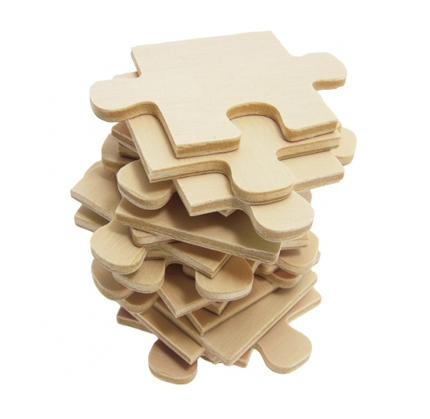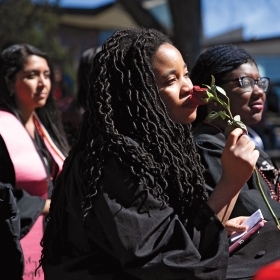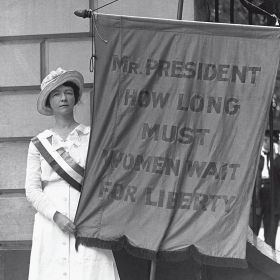Several months ago, just before our governor gave the shelter-in-place order, a friend lent me a couple 1,000-piece puzzles. I took them with some trepidation. Working puzzles often occupied the long summer months when I was a kid, but I hadn’t had my fingers on a jigsaw piece for decades. Not enough time, and definitely not enough patience, the adult me always thought. The puzzles sat on the floor in my “office” (a.k.a. the dining room) for weeks as the pace of remote magazine production ramped up and up and up. Almost daily announcements came from the College—room and board refunds, cancellations of commencement and reunion, and eventually hiring freezes and furloughs. Many of these memos caused us to rethink or redo our content for the spring and summer issues—over and over and over.
One night, when I could barely put two words together or proof a single sentence, I pulled out a puzzle box and started fishing out edge pieces. It quickly became evident why puzzles have been almost as sought-after as toilet paper in this lockdown period. When you’re focused on figuring out how dozens of rosy-hued pieces combine to make a sunset, the mental wheels can’t whir as quickly. One’s thoughts shift into neutral, and in my case, I would find ideas for magazine revisions falling into place as I triumphantly heard the snick! of two long-sought pieces snapping together.
My current puzzle is a beautiful but nasty little number—an incredibly complex, semi-abstract colored-pencil drawing by Frank Lloyd Wright. Many of the pieces are so similar in color and pattern that I’m working only by shape to fit them together. Occasionally there’s an instant, satisfying snick!, but most of the time, it’s a slow, trial-and-error process. I discard many more pieces than I eventually put in place.
In a small way, it’s not that dissimilar from what a lot of us are doing right now as we search for the right path forward. Trial and error: This old way of doing things (getting groceries, teaching children a math lesson, having an uninterrupted meeting with work colleagues) doesn’t work anymore, but maybe that new idea does.
Take this magazine, for example. We’ve now trialed-and-errored our way to version 56b. It started out as a special issue on women in politics, to celebrate the 100th anniversary of the 19th Amendment and preview the election in November. The one article from that plan that remains is “The Fight for—and Against—the Vote.” (Fascinatingly, writer Amita Parashar Kelly ’06 discovered that there was substantial opposition to woman suffrage at the Wellesley of a century ago.)
There were more relevant and compelling pieces that went snick! when we subbed them in. A graduation celebration for the class of ’20—with five wonderful mini commencement addresses from alums and faculty. A funny and poignant essay about sheltering at home—and working—with a 7- and a 10-year-old (“The Unplanned Voyage”). And an exploration of what Emily Dickinson’s poetry teaches us about being alone (“A Solitude of Space”). These pieces fit together to create a compelling picture of Wellesley in the COVID-19 period. (We’ve added a few items since then, as Black Lives Matter protests filled streets around the world.)
One of the things I like most about puzzles is you can’t see the whole picture at once—it unveils itself gradually, if you persist. These days, as an inveterate planner, I sometimes find myself a little frustrated when I can’t make decisions in an efficient way. But I’ve been grateful to learn to slow down, enjoy the steady process of putting in piece after piece, and watch the picture develop. Wishing all of you patience, a lot of snicks!, and emerging new views.








We ask that those who engage in Wellesley magazine's online community act with honesty, integrity, and respect. (Remember the honor code, alums?) We reserve the right to remove comments by impersonators or comments that are not civil and relevant to the subject at hand. By posting here, you are permitting Wellesley magazine to edit and republish your comment in all media. Please remember that all posts are public.